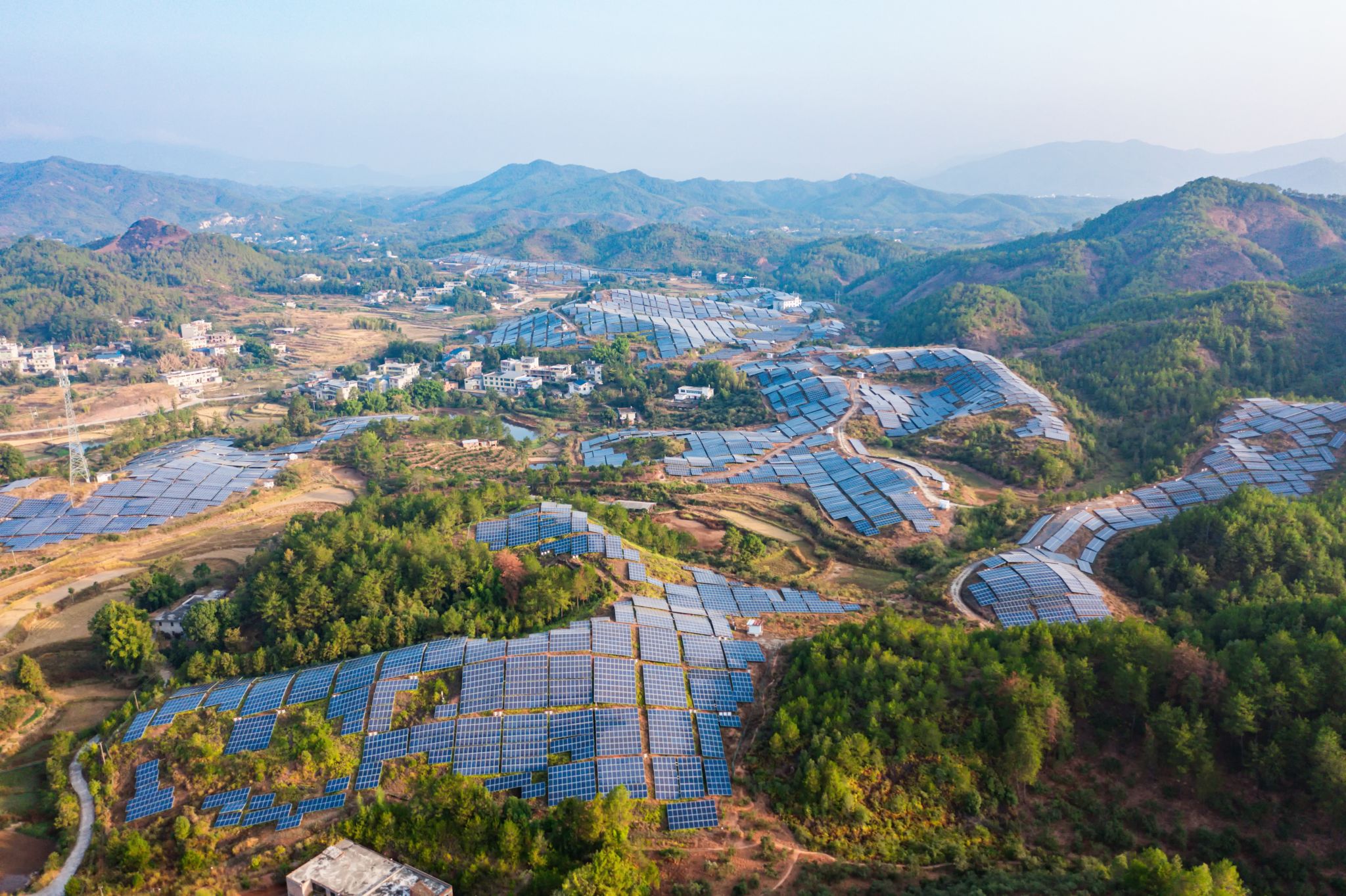Materials scientist Hairen Tan is on a mission to develop affordable, durable, efficient solar cells that can deliver clean, low-cost electricity for all.
Early life experiences have had a profound impact on Hairen Tan, a professor at Nanjing University in China. “My village didn’t have electricity until I was 10 years old,” Tan recalls. “Since then, I have dreamed of making clean, cheap electricity available to everyone around the world,” he says.
Tan is researching improved ways to combine light-harvesting photovoltaic materials, to create solar cells that capture more energy from sunlight. Expanding access to electricity is not his sole driver; next-generation solar cells have been earmarked as a critical renewable energy technology to reduce carbon emissions and combat climate change.
“Photovoltaic devices can solve energy and environmental problems at the same time,” Tan says.
A key focus of his team’s research is an experimental technology called a tandem solar cell, which is a photovoltaic device with multiple light absorption layers.

Solar power promises affordable, clean energy for all, but first researchers must find ways to make solar cells that are more efficient, durable and take less energy to manufacture.
Credit: Getty Images
Tandem devices
Today’s conventional ‘single-junction’ solar cells — the design used for regular silicon solar panels — have a theoretical solar energy capture efficiency limit of approximately 33%. “For a tandem device, this value goes up to 45%,” Tan says.
Tandem solar cell research was reinvigorated by the discovery of a novel, high efficiency photovoltaic material called perovskite in 2009. Today, the best prototype single junction perovskite solar cells rival the efficiency of silicon, and the technology is on the cusp of commercialisation.

An all-perovskite tandem solar cell. The multiple light-absorption layers promise to deliver more electricity from sunlight than conventional solar cells. In the past five years, a team led by Hairen Tan of Nanjing University has broken the efficiency record for all-perovskite tandem solar cells six times.
One route to even higher solar cell performance could be to combine silicon and perovskite in a tandem device. “But perovskite/silicon tandem devices have a relatively high cost, due to the expensive and energy intensive way the silicon sub-cell is made,” Tan says. Perovskite photovoltaic materials, in contrast, can be made by inexpensive solution processing techniques, such as slot-die coating — a coating technique to apply thin films via solution processing onto typically flat surface.
Tan is creating tandem solar cells by combining two perovskites with different formulations in a single device. “All-perovskite tandem solar cells could achieve high efficiency while having the lowest cost, and lowest manufacturing energy consumption, of any possible tandem cell combination,” he says.
Two key hurdles to developing practical all-perovskite tandem solar cells are now a major focus of the Tan team. So far, the efficiency of all-perovskite tandem solar cells has remained a long way short of the theoretical possibility. “The long-term stability of the devices is also a challenge,” Tan says. Significant progress toward both goals has recently been made in Tan’s lab.
Much less waste
Tandem cells are designed to deliver more electricity from sunlight by exploiting the fact that high frequency visible and ultraviolet light carries more energy than low frequency infrared light.
In a single junction solar cell, the extra energy in high frequency wavelengths of sunlight is wasted as heat. In an all-perovskite tandem solar cell architecture, a layer called a wide-bandgap perovskite (WBP) — specifically tuned to capture high frequency light — is combined with a narrow-bandgap perovskite (NBP) tuned to low frequency light.
To date, the main factor limiting the power conversion efficiency of all-perovskite tandem solar cells is defects on the surface of the NBP sub-cell. Excited electrons generated within the NBP by incoming sunlight become trapped in these defects. The captured energy is ultimately lost to a process called charge recombination.
So far, the strategy to mitigate these defects has been to add an additional ultra-thin, two-dimensional perovskite layer on to the NBP surface. “However, the 2D perovskite has poor uniformity and low conductivity, which limits the performance of the device,” Tan says.
In their latest work, Tan and his team developed a technique to add a thicker, compact 3D perovskite coating on to the NBP surface1. This design supressed charge recombination, and enhanced charge extraction. “We demonstrated a certified efficiency of 28%, a world record for an all-perovskite tandem device,” Tan says. “For the first time, this efficiency surpasses the highest-performed silicon solar cells.”
Stability also improved. “Our devices maintain over 93% of initial efficiency after continuous operation under light for 600 hours,” he says.
Record breakers
Nanjing University, where Tan has worked since joining from the University of Toronto, Canada, in 2018, is the ideal place for solar cell research, he says. “Nanjing University has a strong academic atmosphere. In the past five years, our team has broken the efficiency record of all-perovskite tandem solar cells six times.”
Nanjing also happens to be the capital of Jiangsu province, the centre of the photovoltaics industry in China and global solar cell manufacturing. “Our location makes it is easier to commercialise new photovoltaic technologies. We have close collaboration with major photovoltaic companies,” he says.
On the academic side, Tan’s lab is working to further improve efficiency and light stability of all-perovskite tandem solar cells. “Developing strategies for large-area perovskite film preparation suitable for industrial manufacture is also important,” Tan says.
“More and more young scientists are joining Nanjing University,” Tan adds. “Nanjing will play an important role in the future of photovoltaics.”
Reference:
Lin, R. et al. Nature. June 08, 1-3 (2023). https://doi.org/10.1038/s41586-023-06278-z
Source: Office of Science and Technology
